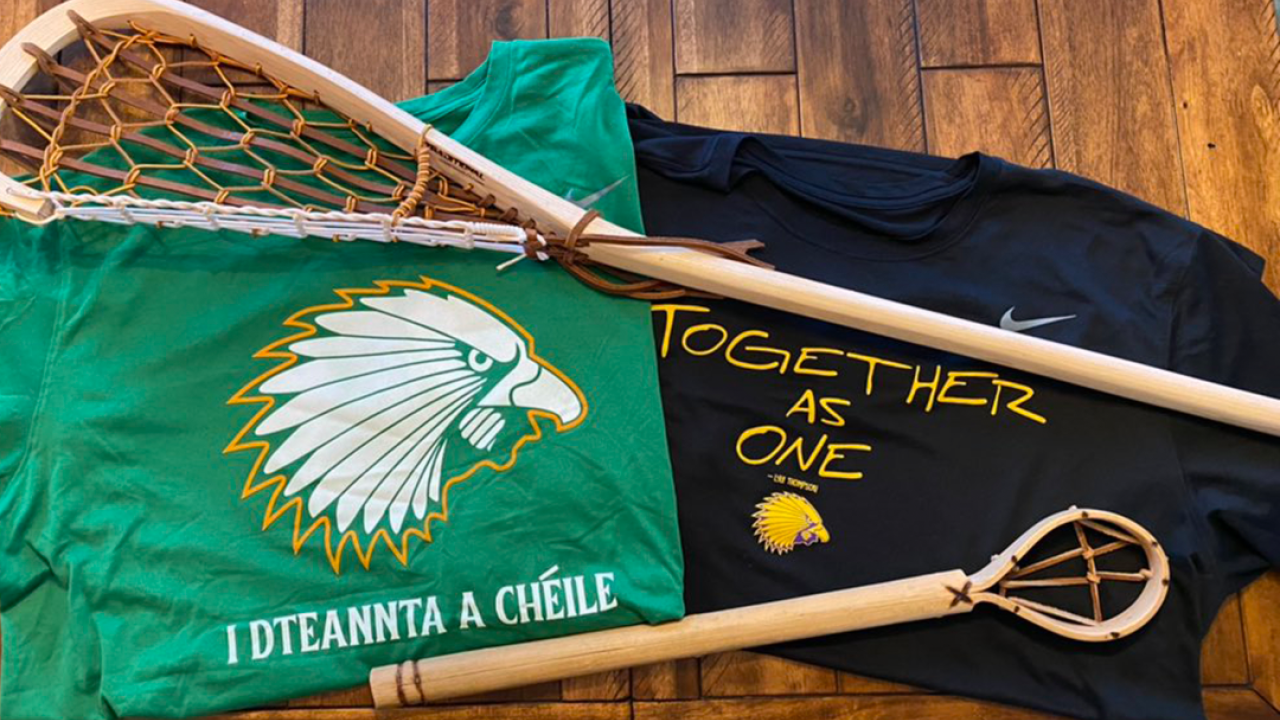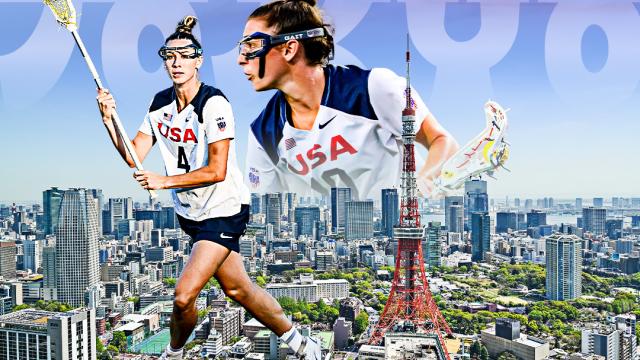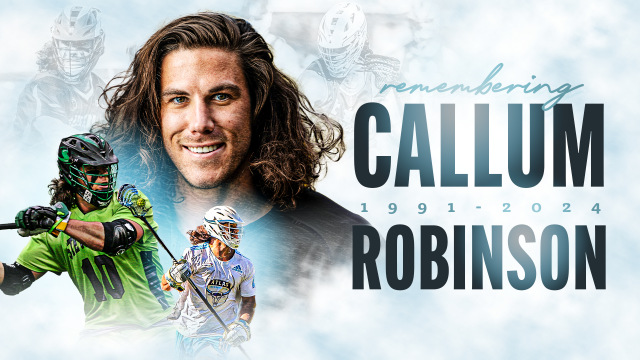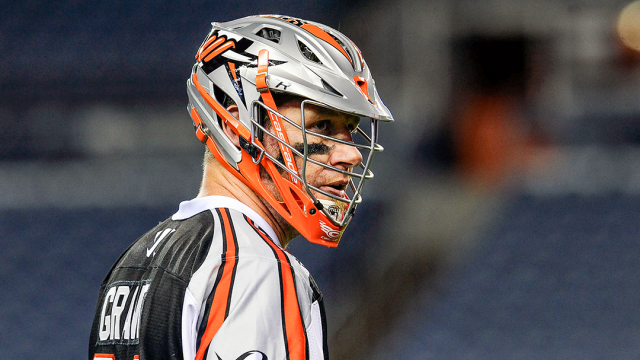
The Empathy that Brought the Iroquois and Irish Together as One
Each morning, Lyle Thompson jogs around his home in the Six Nations reserve south of Toronto. Four laps around his property equal a mile. He mixes up his routine with sprints and longer runs. Next, he stretches and lifts kettlebells. Finally, he grabs his lacrosse stick and fires on a goal in his yard for up to an hour, sometimes longer. Home-cooked meals with lots of vegetables are in. Fast foods and sodas are out. It helps that he keeps so busy homeschooling his five children. He doesn’t have time to become bored and turn to junk food for comfort.
One of the top lacrosse athletes in the world, Thompson is striving to stay fit amid the isolation and uncertainty stemming from the coronavirus pandemic. The two-time Tewaaraton Award recipient wants to be ready for when professional lacrosse resumes play.
At the same time, Thompson, who plays for the National Lacrosse League’s Georgia Swarm and is expected to join the Premier Lacrosse League following its merger with Major League Lacrosse, is peering deeper into the future, all the way to 2022 when he plans to compete in the World Games in Alabama. Featuring 3,600 international athletes who will compete in 34 sports across 11 days, the event will represent a big step for getting men’s lacrosse back into the Olympics. Thompson is eager to don the golden eagle emblem of his team, the Iroquois Nationals, step onto that big stage in Birmingham and represent fellow Native Americans, who originated lacrosse.
“This is more than just a sports thing. It is really a fight for our people so that we can be recognized for who we are. It is a fight for our sovereignty at the same time,” said Thompson, a citizen of the Onondaga Nation, one of the six Native American nations that make up the Haudenosaunee Confederacy. “And lacrosse is really our vehicle.”
There is something else on Thompson’s mind. He is weighing how he will publicly show gratitude in Birmingham for a remarkable act of sportsmanship that helped the Iroquois get invited to the event, a decision reflecting the empathy that has endured for generations between two historically oppressed people.

PHOTO BY DEIDRE ELROD/CHOCTAW NATION
Choctaw Nation of Oklahoma Chief Gary Batton, left, leads a traditional Choctaw Snake Dance at the 2017 dedication of Kindred Spirits monument in Midleton, Ireland.
Kindred Spirits
Nine giant eagle feathers built of stainless steel rise in the middle of a verdant park in Midleton, Ireland, forming the shape of an empty bowl. Ethereal when lit from below at night, the monument represents the delicate feathers prized by the people of the Choctaw Nation and the humanity they showed toward Ireland. The creator, Alex Pentek, says the tribute — consisting of more than 20,000 welds — is meant to signify the Choctaw and Irish are forever kindred spirits.
The story behind the monument stretches back to the 19th century, when Ireland endured one of the world’s worst catastrophes. Many refer to it as the Irish famine. In Irish, it is called An Gorta Mór, or the Great Hunger. Between 1845 and 1852, more than a million Irish men, women and children died as blight destroyed their potato crops. A greater number left during the disaster for America, Canada and elsewhere. In all, Ireland lost about a quarter of its population.
Much of what caused Ireland’s calamity had been developing for generations under British rule, said Christine Kinealy, the founding director of Ireland’s Great Hunger Institute at Quinnipiac University. Irish Catholics, Kinealy said, were denied civil rights and access to good quality land. Some British considered Ireland lazy and overpopulated, Kinealy added, while others oversaw parsimonious and inadequate relief efforts that exacerbated the suffering, including public works projects in the middle of a brutal winter. Meanwhile, massive amounts of food were exported from Ireland to England.
Struck by Ireland’s plight, people all over the world donated money to help the starving nation. Among them were Native Americans, including the Cherokee and Choctaw. In 1847, the Choctaw donated $170, which is worth nearly $5,400 today.
“It is just a remarkable example of compassion and kindness,” said Kinealy, who documented the Choctaw donation in her book, “Charity and the Great Hunger in Ireland: The Kindness of Strangers.” “What a sacrifice it must have been.”
Click the information icon for photo captions and credits.
At the time, the Choctaw were still reeling from their own calamity, one driven by white supremacy, greed and an insatiable demand for their land. After President Andrew Jackson signed into law the Indian Removal Act of 1830, the U.S. government forcibly removed the Choctaw from their lands in the South. In all, 15,000 of them traveled the Trail of Tears between 1831 and 1833, according to the Choctaw Nation of Oklahoma, and up to a third died from disease, starvation, exposure and murder. Their removal to Oklahoma continued into the 20thcentury.
In 1847, the Arkansas Intelligencer reported on a meeting in Skullyville, Oklahoma, where the Choctaw heard a plea to help the Irish. The list of people who agreed to donate, the newspaper reported, included “many full-blooded Choctaw Indians, who knew nothing more, cared for nothing more, than the fact that across the Big Water, there were thousands of human beings starving to death.” The following month, the chairman of the General Irish Relief Committee of New York, wrote a letter to the Society of Friends, highlighting $144,000 in donations collected for Ireland. That money, he wrote, included $170 “of which the largest part was contributed by the children of the forest, our red brethren of the Choctaw Nation.”
“They knew what it was like to starve,” said Judy Allen, a historic projects officer for the Choctaw Nation of Oklahoma. “They knew what it was like to have a stronger, larger government oppress them.”
The Irish and Choctaw have remained close since, at times demonstrating together against famine. In 1992, a plaque commemorating the Choctaw donation was unveiled in the Dublin lord mayor’s residence. Three years later, Irish President Mary Robinson visited the Choctaw in Oklahoma, thanking them for their generosity. In 2017, some Choctaw visited Ireland for the dedication of Pentek’s Kindred Spirits monument. Irish Prime Minister Leo Varadkar traveled to the Choctaw Nation in 2018 and announced an annual scholarship allowing Choctaw students to study in Ireland.
This year, Native Americans issued a desperate plea for help. And the Irish responded. In a big way.

PHOTO BY MATTEO HERRERA
Shandiin Herrera, a Lead for America fellow with the Yee Ha’ólníi Doo nonprofit humanitarian organization, distributes COVID-19 relief aid in Kayenta, Arizona.
Ireland Remembers
The origin of the messages is unmistakable. Short and sweet, they declare: “Love from Ireland” and “Ireland Remembers.” Some are written in Irish. One was posted along with a photo of the Kindred Spirits monument. All of them accompany COVID-19 relief donations to a GoFundMe campaign for Navajo and Hopi families.
American Indians are experiencing disproportionately higher rates of infection and death during the pandemic, according to the Centers for Disease Control and Prevention. As of Dec. 17, COVID-19 had infected nearly 20,400 Navajo and killed 732, Navajo Department of Health figures show. The Hopi Tribe, meanwhile, recorded 671 positive cases of the disease by Dec. 7.
Thomas Joyce donated to the campaign, thanking the Choctaw for their help during the Irish famine and declaring: “I might not be around today without it.” Elizabeth McNulty also gave, writing: “This is my fifth donation in thanks to the Choctaw Nation for help given to my ancestors in Ireland.” David O’Hanlon contributed as well, posting: “We will never forget your kindness in our darkest hour. Thank you from Ireland.”
Donations from Ireland picked up substantially in May after Naomi O’Leary, a Europe correspondent for The Irish Times, tweeted about the GoFundMe campaign, saying: “Native Americans raised a huge amount in famine relief for Ireland at a time when they had very little. It’s time for [us] to come through for them now.”
Since it began March 15, the campaign has raised more than $6.8 million for food, water, masks, cleaning supplies and other aid. By Oct. 21, $1 million had come from 26,800 donors in Ireland, according to one of the campaign’s founders, Ethel Branch, a former Navajo Nation attorney general. Even more was donated from people who live elsewhere but who have Irish ancestry.
“It is such a beautiful, beautiful thing. We have seen so much incredible generosity for our community,” said Branch, the founder and interim executive director of Yee Ha’ólníi Doo, a nonprofit humanitarian organization.
Ireland’s charity is particularly gratifying for Gary Batton, chief of the Choctaw Nation of Oklahoma.
“It is a wonderful story,” he said. “I just see it as a good deed that continues to be carried forward today and hopefully into the future.”
As the world grappled with the pandemic this year, Native Americans and the Irish encountered another challenge, one that would draw them even closer.
Not Invited to the Games
Randy Staats boiled with anger this year and let it show in a column he wrote for Lacrosse All Stars. In his piece, he recalled how the Iroquois Nationals could not compete in the 2010 World Lacrosse Championship in England because the British government rejected his team’s Haudenosaunee passports. Eight years later, he added, his team finished third in the men’s championship in Israel, despite facing delays in arriving for the games because of passport issues. Staats referred to the worldwide movement for racial justice as he vented about how the Iroquois, the “life-bringers” of lacrosse, were not invited to the 2022 World Games in Alabama.
“I thought it was a mistake, honestly,” said Staats, a member of the Mohawk Turtle Clan, which is part of the Haudenosaunee Confederacy. “I got pretty angry with it. And I was just trying to figure out what was going on.”
The controversy spread rapidly across social media. Staats, who plays alongside Thompson for the Georgia Swarm, joined more than 54,000 other people in signing a change.org petition calling for including the Iroquois.
“I don’t like how there was no accountability,” he said. “It was just an apology and people moved on with their lives. What are we supposed to do? Just run into this every year? Who is owning up to these mistakes?”

PHOTO BY ANNE EVANS
Randy Staats wore athletic tape on his helmet with “2022?” inked in black marker during the Major League Lacrosse season in response to the initial exclusion of the Iroquois Nationals from the 2022 World Games.
The reasons behind the original decision not to invite the Iroquois are complex, according to World Lacrosse, the international governing body for the sport, which said it had to abide by criteria established by the International World Games Association. Because the association adopts the principles of the Olympic charter for the event, World Lacrosse hewed to the language in it that defines a participating “country” as “an independent state recognized by the international community.” Typically, that is the United Nations. The charter also requires that a participating country have a national Olympic committee.
The Haudenosaunee do not have a national Olympic committee, though they are planning to create one with the help of World Lacrosse. And they are not a member state of the United Nations. Still, they maintain they have sovereignty, pointing out their six nations entered into treaties with the U.S. government in the 18th century, they govern themselves and they issue their own passports, which have been recognized by many other nations.
Other teams were affected by the same invitation process. England, Scotland and Wales, for example, will combine as Great Britain as they have historically done in the World Games and the Olympics, though England ranked fifth in the 2018 championship; Scotland, 11th; and Wales, 14th. Puerto Rico and the Philippines placed in the top 10 in 2018 but were not full members of World Lacrosse, so they did not receive invites to the games in Alabama.
For other events run by World Lacrosse, such as world championships, World Lacrosse alone determines the eligibility criteria and allows the Haudenosaunee men’s and women’s teams to compete independently.
As the firestorm surrounding the Iroquois intensified, World Lacrosse said it asked the International World Games Association to reconsider its criteria. Meanwhile, Nick Sellers, CEO of the World Games 2022 Birmingham organization, reached out to the Iroquois Nationals. World Lacrosse obtained letters of “no objections” from the Canadian and U.S. Olympic committees and national lacrosse governing bodies, the Canadian Lacrosse Association and US Lacrosse. (Steve Stenersen, vice president of World Lacrosse, serves as president and CEO of US Lacrosse, which publishes US Lacrosse Magazine.)
A spokeswoman for the International World Games Association said her organization followed its principles and did not interfere with World Lacrosse’s selection process. The association ultimately confirmed the Iroquois’ eligibility to compete in Birmingham.
The rules cap the number of lacrosse teams invited to the World Games at eight. So one more thing had to happen before the Iroquois could receive and accept their invitation.
‘The right thing to do’
The Iroquois arrived in Dublin in May of 1876, wearing red and white striped jerseys, blue belts, red and yellow striped knickers, moccasins and blue velvet caps adorned with ornamental beading and scarlet feathers. Their faces streaked or dotted with red, blue and black paint, some wore silver rings and earrings. The Canadians arrived next, clad in white flannel shirts, gray tweed knickers and caps with scarlet beading.
Under sunny skies, a light breeze swept the grounds for their lacrosse exhibition games. Ireland’s lord lieutenant — the island was still under British rule — attended the spectacle along with Dublin’s lord mayor and a representative of the Dublin Lacrosse Club. So did William Beers, a Canadian dentist and lacrosse athlete who promoted the sport. The Iroquois won three of the five games that day.
These descriptions come from an article published that year in The Irish Times. The vivid account describes the games as “most exciting, as well as highly interesting.”
“Some splendid running as well as ‘dodging,’ if such it may be called, was witnessed,” the article says, “and the spectators were much struck at the rapidity with which a player carrying the ball on his crosse, closely pursued by an opponent, would, before his adversary could strike his crosse and dislodge the ball, hurl the ball to the opposite end of the ground.”
Such reporting has informed the extensive research Michael Kennedy, CEO of Ireland Lacrosse, has pulled together about the history of the sport in his country. Kennedy has written about the Montreal Shamrocks Lacrosse Club forming in 1867 in an area of Quebec populated by Irish immigrants. He has also written about how, just five years later, the Ards Lacrosse Club formed outside of Belfast. The sport has grown substantially in Ireland during the 21st century. The Irish have started a lacrosse club in Dublin, college teams and a girls’ secondary school tournament. They have also created leagues and men’s, women’s and U19 national teams.
Two years ago, the Irish men’s team placed 12th in the world championship in Israel. That ranking helped the team get an invite to the World Games in Alabama. But when they learned the Iroquois were not invited, the Irish surveyed their board members, coaches, directors and other leaders. Their decision was unanimous: Do whatever it takes to help their Native American competitors. Ultimately, the Irish voluntarily withdrew to make way for the Iroquois.
Sonny Campbell, who has competed for Ireland Lacrosse, said his team made this decision because “it was the right thing to do.”
“None of us would be playing lacrosse — nobody would be going to Birmingham, Alabama, to play lacrosse in the World Games — if it wasn’t for the Iroquois giving this game to the world,” said Campbell, a software engineer based in Dublin.
Campbell’s teammate, Aaron Cahill, expressed similarly strong feelings.
“It gives me kind of chills to be able to be a part of all of this. I have two daughters and it is going to be quite amazing to be able to share this story with them,” said Cahill, a financial adviser who serves as the assistant men’s lacrosse coach at Onondaga Community College.
The Irish have since joined the Iroquois in promoting T-shirts that blend their team colors and symbols and declare “Together as One,” a hashtag that has trended widely on social media.

PHOTO BY TOM BEARY (LEFT) / PHOTO COURTESY OF THE MUSIAL AWARDS (RIGHT)
Left: Ireland Lacrosse CEO Michael Kennedy with Iroquois Nationals co-founder Oren Lyons, a chief, faithkeeper and citizen of the Onondaga and Seneca nations. Right: Kennedy receiving a Musial Award on behalf of Ireland Lacrosse. The Musial Awards ceremony airs Saturday on CBS (3 p.m. Eastern).
Ireland Lacrosse’s humanity did not go unnoticed. In October, the Irish learned they had been selected to receive a Musial Award for good sportsmanship. Named after baseball hall of famer Stan Musial, the award is meant to encourage kindness, integrity and civility. Ireland will be in good company. Previous award recipients include Arnold Palmer, Jackie Joyner-Kersee and Cal Ripken Jr. The Irish are the first lacrosse players to receive the honor. The awards ceremony — produced by the St. Louis Sports Commission and the National Sportsmanship Foundation — is scheduled to air Saturday on CBS (3 p.m. Eastern).
In a short video preview the ceremony’s organizers released to US Lacrosse Magazine, Lyle Thompson and others affiliated with the Iroquois Nationals express gratitude for Ireland’s decision. The Iroquois intend to honor the Irish on the field in Birmingham in some way, perhaps by incorporating Ireland’s team colors on their uniforms. The Haudenosaunee women’s team also received an invitation to compete in the games, thanks to a first-place finish in the 2019 Pan-American Lacrosse Association World Qualifiers.
But it is the Irish, Kennedy said, who are grateful to the Iroquois and other Native Americans for sharing the sport of lacrosse. It is personal for him. Kennedy started playing lacrosse as a boy in New York. Since then, he has competed for the Irish national team abroad, served as its captain and coached the sport. He met his wife, Patrice Bowe, through lacrosse and they have two sons together. Five years ago, Kennedy played in the world indoor championship on the Onondaga Nation’s territory in New York. A page in his passport bears the Haudenosaunee Confederacy stamp.
“I have just gotten so much from the game of lacrosse,” he said. “It has been so instrumental in my life.”
Kennedy is now organizing the World Lacrosse Men’s U20 World Championship in Limerick, Ireland, an event that was recently postponed to 2022 because of the pandemic. He and World Lacrosse have already invited the Iroquois to compete there. And Kennedy has written the Irish ambassador in Ontario, asking for help getting the Iroquois the travel visas they will need.
Jeremy Redmon writes for The Atlanta Journal-Constitution and officiates college lacrosse in the South. A longtime member of US Lacrosse, he serves as vice president of the Georgia Lacrosse Officials Association. Read more of his writing for US Lacrosse Magazine here and follow him on Twitter at @JeremyLRedmon.
Jeremy Redmon
Categories
Related Articles




